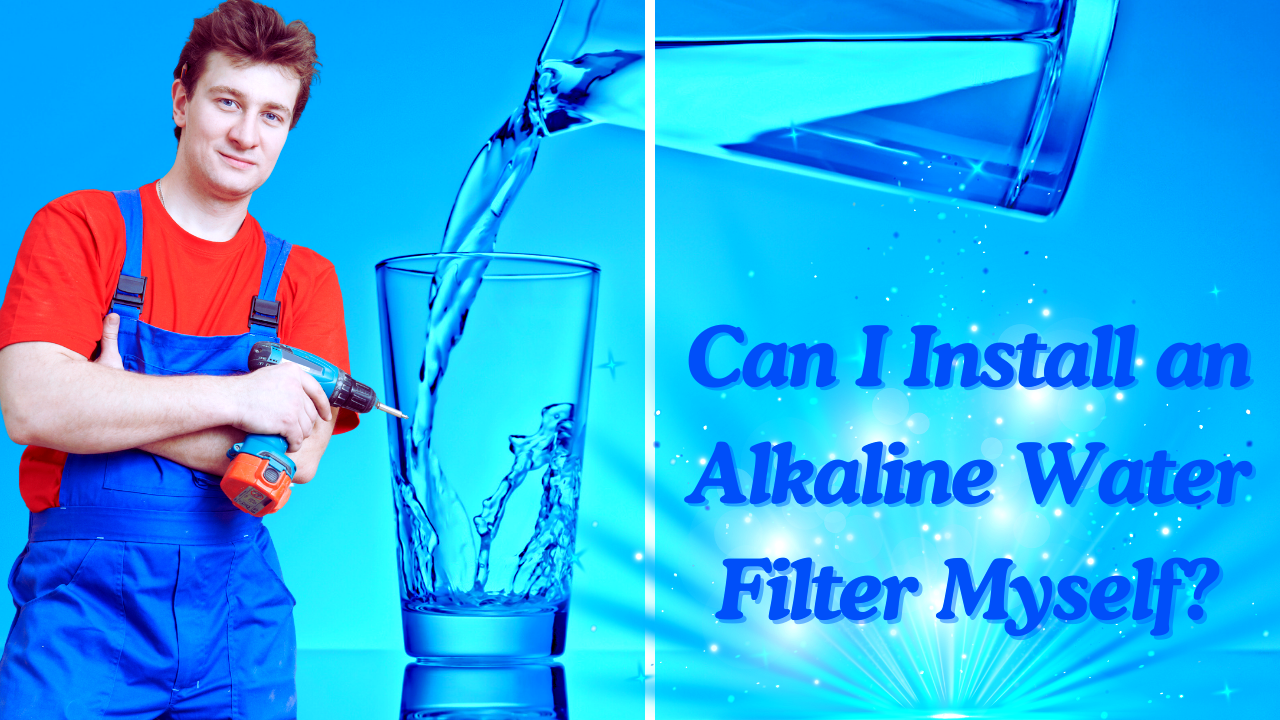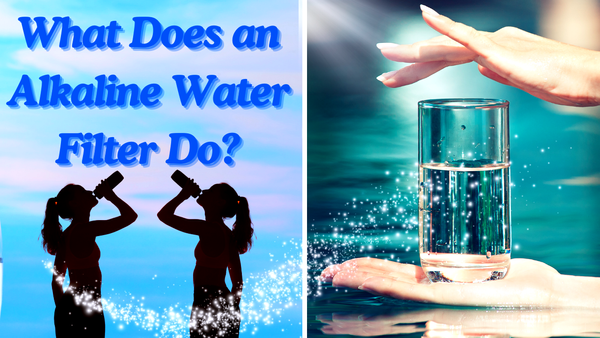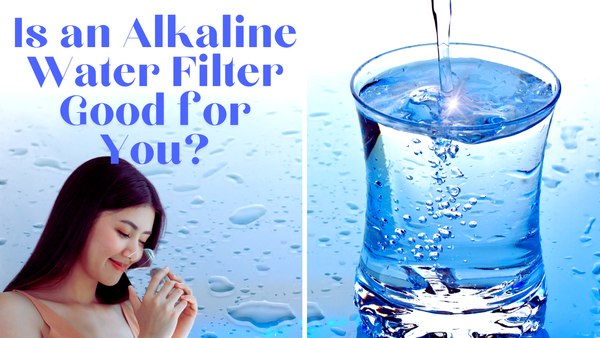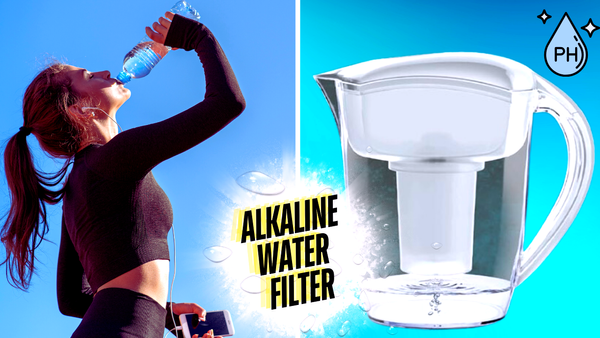Key Takeaways:
- You can install an alkaline water filter yourself with the right tools and instructions.
- Knowing the different types of alkaline water filters will help you choose the right one for you.
- Maintenance is key to the longevity and effectiveness of your alkaline water filter.
Water is life, and water quality matters to our health. Alkaline water filters have become popular for their health benefits, including better hydration and bone health. But can you install an alkaline water filter yourself? This easy guide will take you through the process from understanding the types of filters to step-by-step installation.
Understanding Alkaline Water Filters
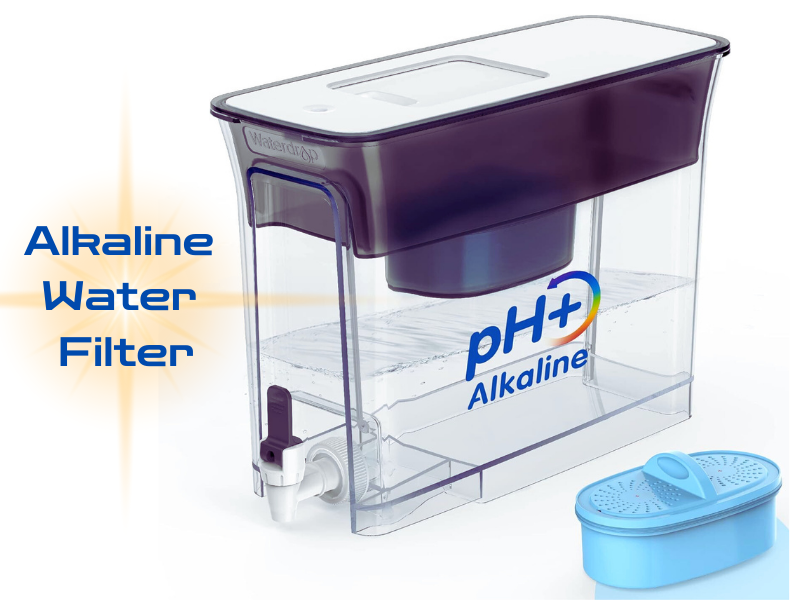
Alkaline water filters are designed to raise the pH level of tap water, making it less acidic and more alkaline. These filters often add beneficial minerals like calcium, magnesium, and potassium to the water for bone health and overall well-being. There are different types of alkaline water filters, including countertop models, under-sink systems, and pitchers.
Countertop models are easy to install and require minimal plumbing work. They sit on your kitchen counter and connect directly to your faucet. Under-sink systems are more complex but offer a more permanent solution. These systems are installed under your sink and connect to your water supply, providing a continuous flow of alkaline water. These systems often have multiple stages of filtration, including an alkaline filter that adds beneficial minerals to the water. Alkaline water pitchers are the most straightforward option; no installation is required. You fill the pitcher with tap water, and the filter does the rest.
Benefits of Drinking Alkaline Water
Drinking alkaline water has many benefits. One of the main advantages is that it neutralizes acid in the body, which can help with acid reflux and digestion. Alkaline water is also believed to be better for hydration, as the smaller water molecules are more absorbable by the body. The essential minerals added by alkaline water filters can support bone health and overall well-being. It’s safe to drink alkaline water daily, and most people can enjoy the benefits without any problem.
Another benefit of alkaline water is its antioxidant properties. Some studies say alkaline water can neutralize free radicals, reduce oxidative stress, and support overall health. More research is needed to understand these benefits fully, but many people feel more energized and hydrated after switching to alkaline water.
Types of Alkaline Water Filters
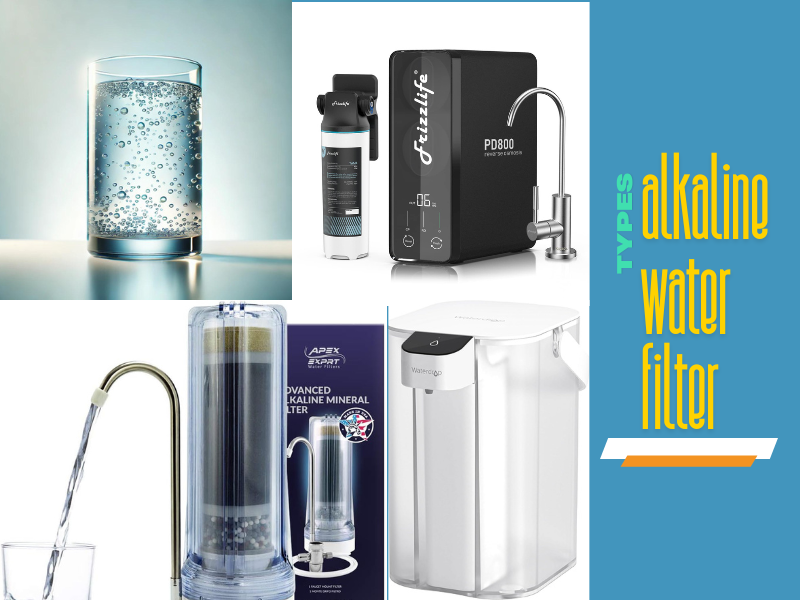
There are many alkaline water filters to choose from, each with its pros and cons. Knowing these options will help you decide which one is right for you.
Countertop Alkaline Water Filters
Countertop alkaline water filters are popular for their ease of installation and use. These filters sit on your kitchen counter and connect directly to your faucet. They usually come with a diverter valve to switch between filtered and unfiltered water. Countertop filters are a great option for renters or those who don’t want to make permanent changes to their plumbing.
Under-Sink Alkaline Water Filters
Under-sink alkaline water filters are a more permanent solution that provides a continuous flow of alkaline water. These systems are installed under your sink and connect to your water supply. Some under-sink systems may have a reverse osmosis system to remove contaminants before the water passes through the alkaline filter. They often have multiple stages of filtration, including sediment filters, carbon filters, and alkaline filters. While under-sink systems require more installation work, they offer the convenience of having alkaline water at your tap.
Alkaline Water Pitchers
Alkaline water pitchers are the simplest and most portable option. They have a filter that increases the water's pH level and adds beneficial minerals. To use an alkaline water pitcher, you simply fill it with tap water and let the filter do its work. While pitchers are convenient and easy to use, they may not have the same level of filtration as countertop or under-sink systems.
Tools and Materials Needed for Installation
Before starting the installation process, gather all the necessary tools and materials. Having everything ready will make the process smoother and faster.
Tools
- Adjustable wrench
- Screwdriver
- Teflon tape
- Drill (for under-sink systems)
- Bucket or container (to catch water during installation)
Materials
- Alkaline water filter system
- Filter cartridges (if not included with the system)
- Tubing and connectors (if not included with the system)
- Mounting brackets (for under-sink systems)
- Reverse osmosis water purifier (if applicable)
Step-by-Step Installation Guide
Installing an alkaline water filter yourself is easy if you follow the steps. This guide will guide you through the installation process for countertop and under-sink systems.
Installing a Countertop Alkaline Water Filter
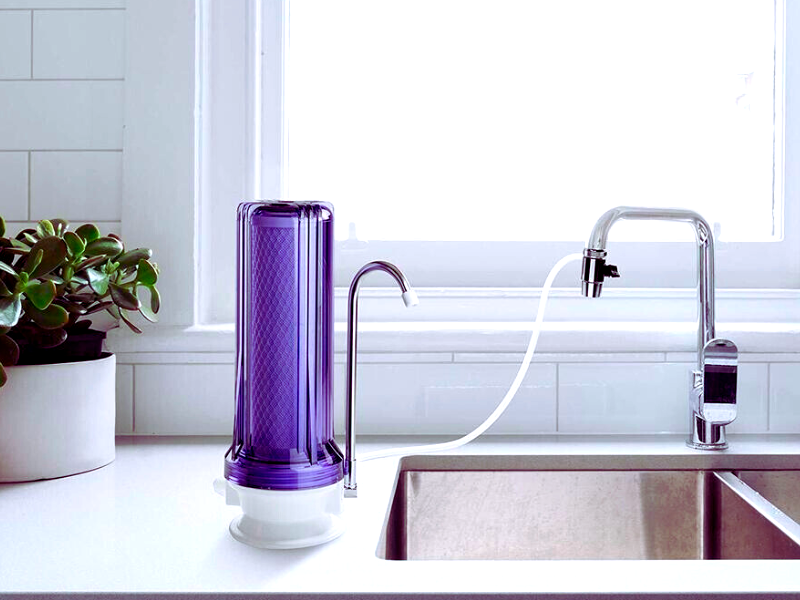
- Prepare the Filter: Unbox your countertop alkaline water filter and read the manufacturer's instructions. Ensure all parts are included and in good condition.
- Attach the Diverter Valve: Remove the aerator from your faucet and attach the diverter valve. Use Teflon tape on the threads to ensure a tight seal.
- Connect the Tubing: Connect the tubing from the filter to the diverter valve. Ensure the connections are secure to prevent leaks.
- Flush the Filter: Turn on the water and switch the diverter valve to the filtered water position. Allow the water to run for a few minutes to flush the filter and remove any air bubbles.
- Check for Leaks: Inspect all connections for leaks. Tighten any loose connections as needed.
Installing an Under-Sink Alkaline Water Filter
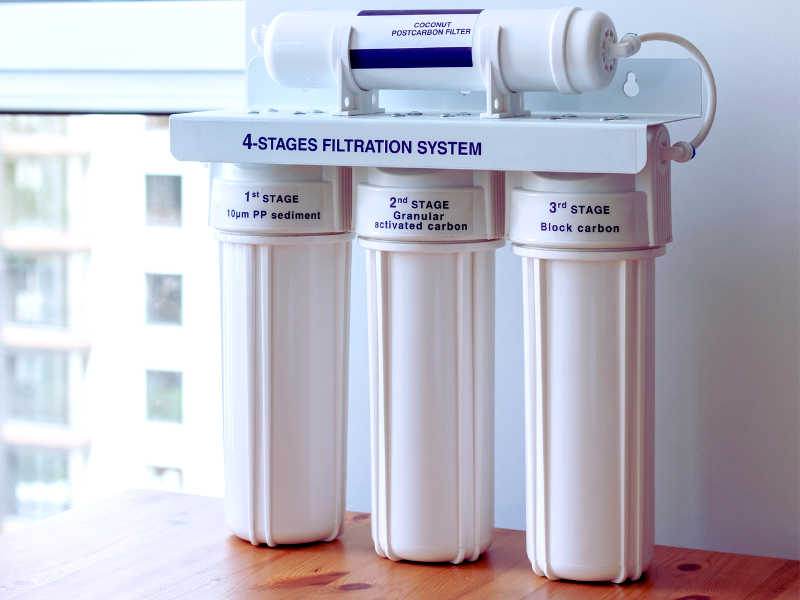
- Turn Off the Water Supply: Locate the cold water supply valve under your sink and turn it off. Place a bucket or container under the valve to catch any water that may spill.
- Install the Mounting Brackets: Use a drill to install the mounting brackets for the filter system under your sink. Ensure the brackets are securely attached.
- Connect the Tubing: Connect the tubing from the filter system to the cold water supply valve. If your system includes an RO system, connect the tubing from the RO system to the filter system. Use Teflon tape on the threads to ensure a tight seal. Connect the other end of the tubing to the filter system.
- Install the Faucet: If your under-sink system includes a dedicated faucet, drill a hole in your sink or countertop and install the faucet. Connect the tubing from the filter system to the faucet.
- Flush the Filter: Turn on the cold water supply valve and allow the water to run through the filter system for a few minutes to flush the filter and remove any air bubbles.
- Check for Leaks: Inspect all connections for leaks. Tighten any loose connections as needed.
Maintenance and Replacement of Filter Cartridges
Regular maintenance is crucial to ensure the longevity and effectiveness of your alkaline water filter. Regular maintenance helps ensure that the filter continues to add healthy minerals like calcium and magnesium to the water. This includes replacing the filter cartridges as recommended by the manufacturer.

Replacing Filter Cartridges
- Turn Off the Water Supply: For under-sink systems, turn off the cold water supply valve. For countertop systems, switch the diverter valve to the unfiltered water position.
- Remove the Old Cartridge: Open the filter housing and remove the old cartridge. Dispose of it according to the manufacturer's instructions.
- Install the New Cartridge: Insert the new cartridge into the filter housing. Ensure it is properly seated and secure.
- Flush the Filter: Turn on the water supply and allow the water to run through the filter for a few minutes to flush the new cartridge and remove any air bubbles.
- Check for Leaks: Inspect all connections for leaks. Tighten any loose connections as needed.
Cleaning the Filter Housing
Regularly cleaning the filter housing can help maintain the performance of your alkaline water filter. Use a mild detergent and a soft brush to clean the housing, and rinse thoroughly with clean water before reassembling.
Common Issues and Troubleshooting
Even with proper installation and maintenance, you may encounter some common issues with your alkaline water filter. Here are a few troubleshooting tips to help you resolve these problems.
Low Water Pressure
If you notice a decrease in water pressure, it may be due to a clogged filter cartridge. Check the manufacturer's recommendations for replacing the cartridge and replace it if necessary. Additionally, ensure that all connections are secure and free of leaks.
Leaks
Leaks can occur if connections are not properly tightened or if the tubing is damaged. Inspect all connections and tubing for signs of wear or damage. Use Teflon tape on threaded connections to ensure a tight seal, and replace any damaged tubing.
Unpleasant Taste or Odor
If your filtered water has an unpleasant taste or odor, it may be due to a contaminated filter cartridge. Replace the cartridge according to the manufacturer's recommendations and flush the system thoroughly. Additionally, ensure that the filter housing is clean and free of debris.
Health Benefits of Alkaline Water

Drinking alkaline water can offer several health benefits, including improved hydration, support for bone health, and potential antioxidant properties. The essential minerals added by alkaline water filters, such as calcium, magnesium, and potassium, can help support overall wellness.
Improved Hydration
Alkaline water is believed to enhance hydration due to its smaller water molecules, which are more readily absorbed by the body. This can help improve energy levels, support digestion, and promote overall health.
Support for Bone Health
The essential minerals added by alkaline water filters, such as calcium and magnesium, can help support bone health. These minerals are crucial for maintaining strong bones and preventing conditions like osteoporosis.
Potential Antioxidant Properties
Some studies suggest that alkaline water can help neutralize free radicals, which can reduce oxidative stress and support overall health. While more research is needed to fully understand these benefits, many people report feeling more energized and hydrated after switching to alkaline water.
Comparing Alkaline Water Filters to Other Water Filtration Systems
When choosing a water filtration system, it's essential to compare the different options available. Alkaline water filters offer unique benefits, but other systems, such as reverse osmosis and water softeners, may also be worth considering.
Reverse Osmosis Systems
Reverse osmosis systems are highly effective at removing contaminants from water, including heavy metals, chlorine, and bacteria. However, they also remove beneficial minerals, which can result in more acidic water. Some reverse osmosis systems include a post-filter that adds minerals back into the water, creating alkaline reverse osmosis water. This process helps make reverse osmosis water alkaline by adding healthy minerals such as calcium and magnesium.
Water Softeners
Water softeners are designed to remove hardness minerals, such as calcium and magnesium, from water. While they can improve the taste and feel of water, they do not increase the pH level or add beneficial minerals. Water softeners are often used in conjunction with other filtration systems to provide comprehensive water treatment.
Bottled Alkaline Water
Bottled alkaline water is a convenient option for those who want to enjoy the benefits of alkaline water without installing a filtration system. Bottled alkaline water is often purified water that has been enhanced with minerals to make it alkaline. However, it can be more expensive and less environmentally friendly than using a home filtration system. Additionally, the quality and pH level of bottled alkaline water can vary between brands.
Environmental Impact of Alkaline Water Filters

Using an alkaline water filter can have a positive environmental impact compared to relying on bottled water. By reducing the need for single-use plastic bottles, you can help decrease plastic waste and reduce your carbon footprint.
Reducing Plastic Waste
One of the most significant environmental benefits of using an alkaline water filter is the reduction in plastic waste. By filtering your tap water at home, you can eliminate the need for single-use plastic bottles, which can take hundreds of years to decompose in landfills.
Lowering Carbon Footprint
Transporting bottled water requires significant energy and resources, contributing to greenhouse gas emissions. By using a home filtration system, you can reduce the environmental impact associated with the production and transportation of bottled water.
Summary
Installing an alkaline water filter yourself is a practical and cost-effective way to have alkaline water. You can ensure a successful installation by knowing the different types of filters and following the step-by-step installation guide. Regular maintenance and troubleshooting will keep your system running smoothly and provide clean water for years. Stay connected with us by subscribing to our newsletter today!
FAQ
Can I install an alkaline water filter myself?
You can install an alkaline water filter yourself with the right tools and instructions. Countertop models are easier to install, and under-sink systems require more effort and plumbing knowledge.
How often should I replace the filter cartridges?
The frequency of filter cartridge replacement depends on the manufacturer’s recommendation and your water usage. Typically, cartridges should be replaced every 6 to 12 months for optimal performance.
What are the health benefits of alkaline water?
Drinking alkaline water can have several health benefits: improved hydration, support for bone health, and potential antioxidant properties. The added minerals in alkaline water filters can support overall wellness.
